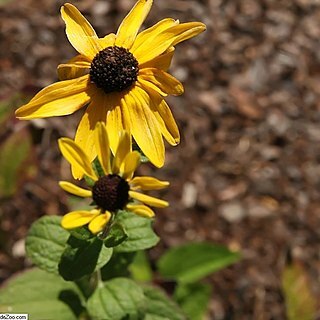Perennial from a woody rhizome; stem 6–10 dm, spreading-villous to subglabrous, sparsely leafy; lvs thin, subglabrous or sparsely hairy, serrate or subentire, the basal very long-petiolate, the cauline progressively less so, the principal ones with ovate to elliptic-ovate or lance-ovate blade mostly 6–10 × 3–5 cm; heads several; disk dark, hemispheric or ovoid, 10–15 mm wide; invol bracts short, with loose or spreading tip; rays ca 13, yellow, 1.5–2.5 cm; receptacular bracts broadly rounded, distally viscidulous-canescent; pappus a minute crown. Pine and oak-hickory woods; rare and local from se. Va. to S.C., Ga., and ne. Ala. July–Sept.

